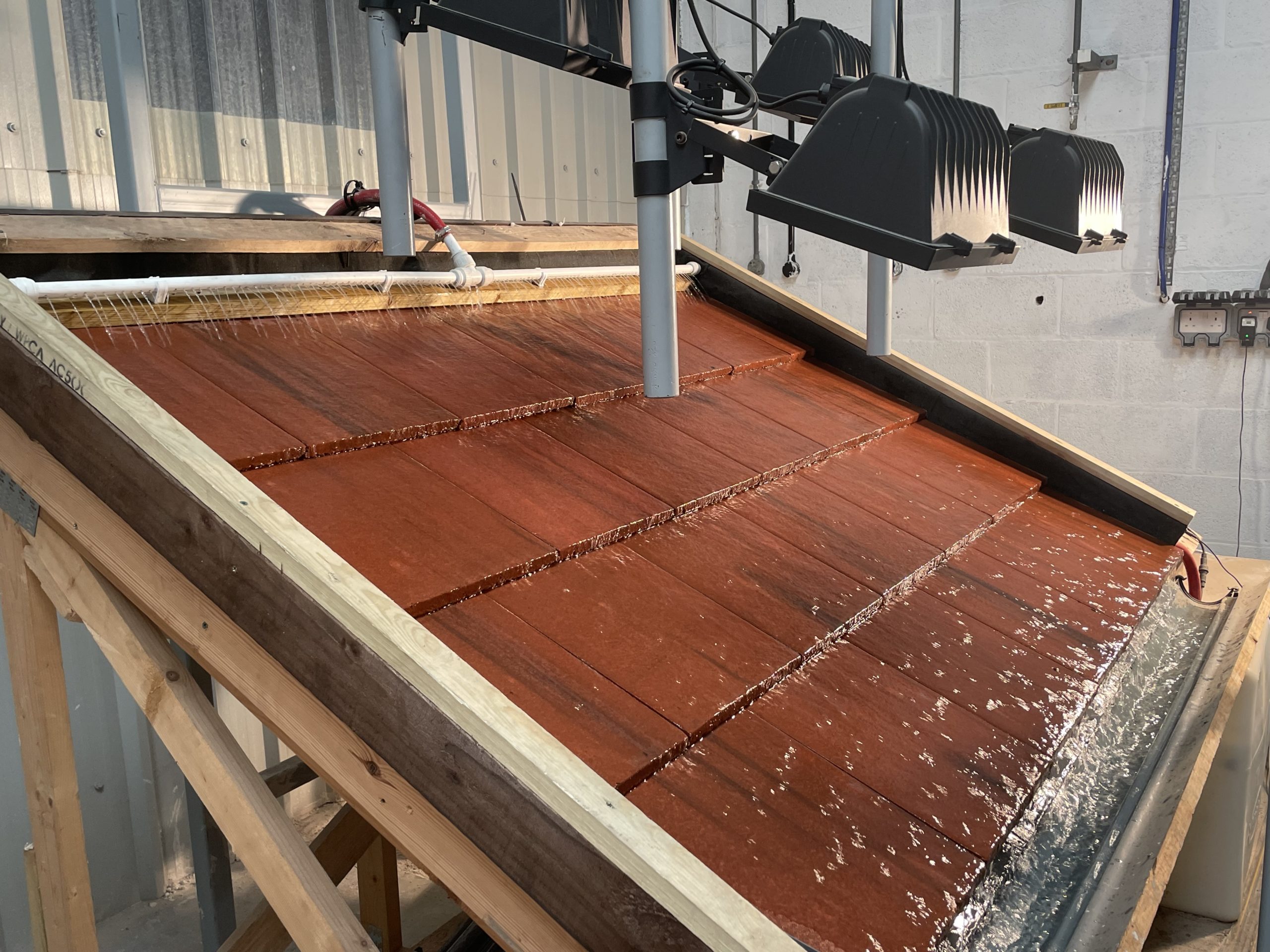Extreme weather is nothing new and needs to be considered when both designing and constructing buildings. Extreme temperatures can cause issues during the installation of some products and reputable contractors will know what these limitations are and what precautions need to be taken for both their workforce and the products to install them both safely and correctly.
Why is it so important to think about the weather that roofs face?
Poor building design and material choices can have a huge impact on an occupant’s comfort and energy usage over the life of the building.
A well-designed pitched roof will protect a structure from solar radiation during warm weather, avoiding overheating, and in cold spells, it protects against wind- driven rain and snow. When considering materials and components for new builds or re-roofing projects, it is essential to choose products with a proven track record from a reputable manufacturer.
Here at Russell Roof Tiles, our tiles have been designed and tested by experts to meet British Standards of manufacturing, thereby providing assurance and peace of mind for the future.
In addition, a pitched roof significantly improves the thermal efficiency of the building partly thanks to the natural ventilation present underneath the top roof layer. This gives the occupants the maximum comfort across all seasons.
The ventilated cavity or roof void created in a pitched roof provides an effective mechanism to evacuate moisture from the roof and prevents excessive condensation from accumulating, potentially degrading the structural integrity of the building.
The building location and roof construction such as the pitch and size will affect the structure’s ability to deal with and discharge rainfall effectively. Critically, the headlap and minimum pitch suitability of a roof tile should always be checked to make sure that the roof will perform as required.
What does Russell Roof Tiles do to check their roofing systems and design?
We work with architects, designers and contractors to consider all of the relevant design factors and features which are taken into account, from the geometry and the site location in conjunction with exposure, roof pitch and rafter length when assessing the roofs long-term ability to withstand the unpredictable British weather.
Our online fixing specification calculator can provide instant and bespoke site-specific recommendations to ensure the correct specification meets with British Standard and building regulation requirement.
Considering the weather and temperature is not just about getting through the cold months though as this summer we have just had some of the hottest sustained periods on record. Many Dry Fix roofing accessory products on the market contain plastic so it is even more important to consider they are made from robust suitable materials. Our Dry Fix accessories are tried and tested and are designed to cope and withstand all temperatures they are exposed to on British roofs, even during the hottest periods.
To ensure correct specification of the roof meets with current requirements and regulation’s our RussSpec service offered by our Technical Department can be provided to give you peace of mind for a project. RussSpec is aimed at architects and specifiers who require detailed roofing specification clauses that comply with the recommendations of British Standards, Codes of Practice and Building Regulations.
We have a technical team of specialists available to discuss and advise on projects, utilising bespoke computer software to calculate anticipated wind speed and pressure values to predict effective fixings that will suit future weather conditions.

